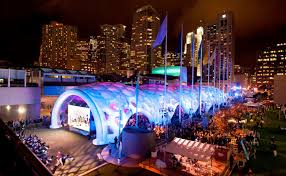Getting Back to Our Roots at Dreamforce
2 min read

I very rarely hear people refer to the “World Wide Web” anymore. In the ‘90s we were obsessed with sites like Yahoo, the burgeoning idea of e-commerce, and “going online” to use AOL to email friends in faraway places. The Internet is truly worldwide and has connected—and greatly impacted—countries and economies in multiple ways, from access to information to entire businesses built purely online.
Today, our business culture has become obsessed with social media and cloud-based automation platforms accessible at our fingertips to connect us with everyone, everywhere—colleagues, business prospects and even strangers—around the world. However, while the WWW has created a global economy, it was clear from my walk through the Cloud Expo at Dreamforce’15 last week, that few companies (read: none) were promoting solutions with a global user base front of mind.
Saleforce’s Dreamforce conference has grown to become a tech industry phenomenon, featuring speakers from global tech companies like Microsoft, Cisco, YouTube and Uber. Salesforce is a global powerhouse after all, with a presence in every major geographical region. In fact, a USA Today article reported this year’s show, the 13th, attracted attendees from 78 countries, yet there was little or no accommodation of non-English speaking guests.
At the Cloudwords booth, our team spoke with attendees from all over the world—Argentina, Burma, Brazil, Canada, France, India, and Switzerland to name a few—fielding questions about globalization best practices from companies big and small. B2B heavyweights like Oracle, Siemens, and Intel; consumer leaders such as Coca-Cola and Mattel; and smaller, local businesses like the East Boston Neighborhood Health Center and Visit Orlando, were all interested in learning how a Global Content Hub like Cloudwords can help them execute business worldwide. The big question… “I’m buying and implementing all these highly efficient sales and marketing automation platforms, but how do I now reach audiences with multilingual content?” Of course, we were happy to explain how Cloudwords can help, and we left the conference even more galvanized in our belief that companies will increasingly demand technology to solve this issue.
Dreamforce may not be billed as an international show, but digital has no borders. And like the World Wide Web twenty-some years ago, it brings companies, customers and prospects together to learn, network and expand their business opportunities. As Salesforce and Dreamforce continue to grow, it will be interesting to see whether the sponsoring and exhibiting companies that make significant investments to attend will respond to the growing demand by international customers for solutions that work the way they do—globally.



